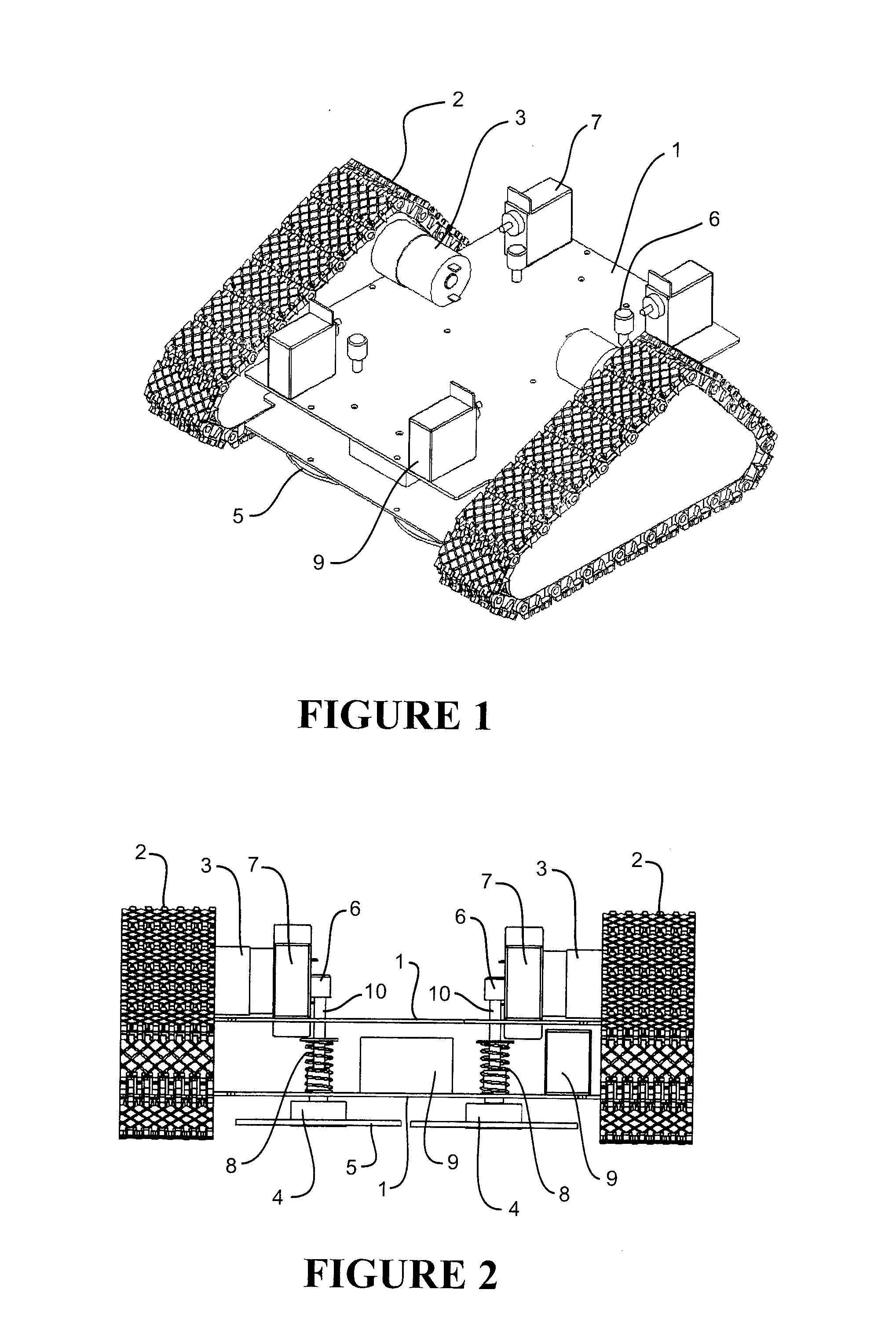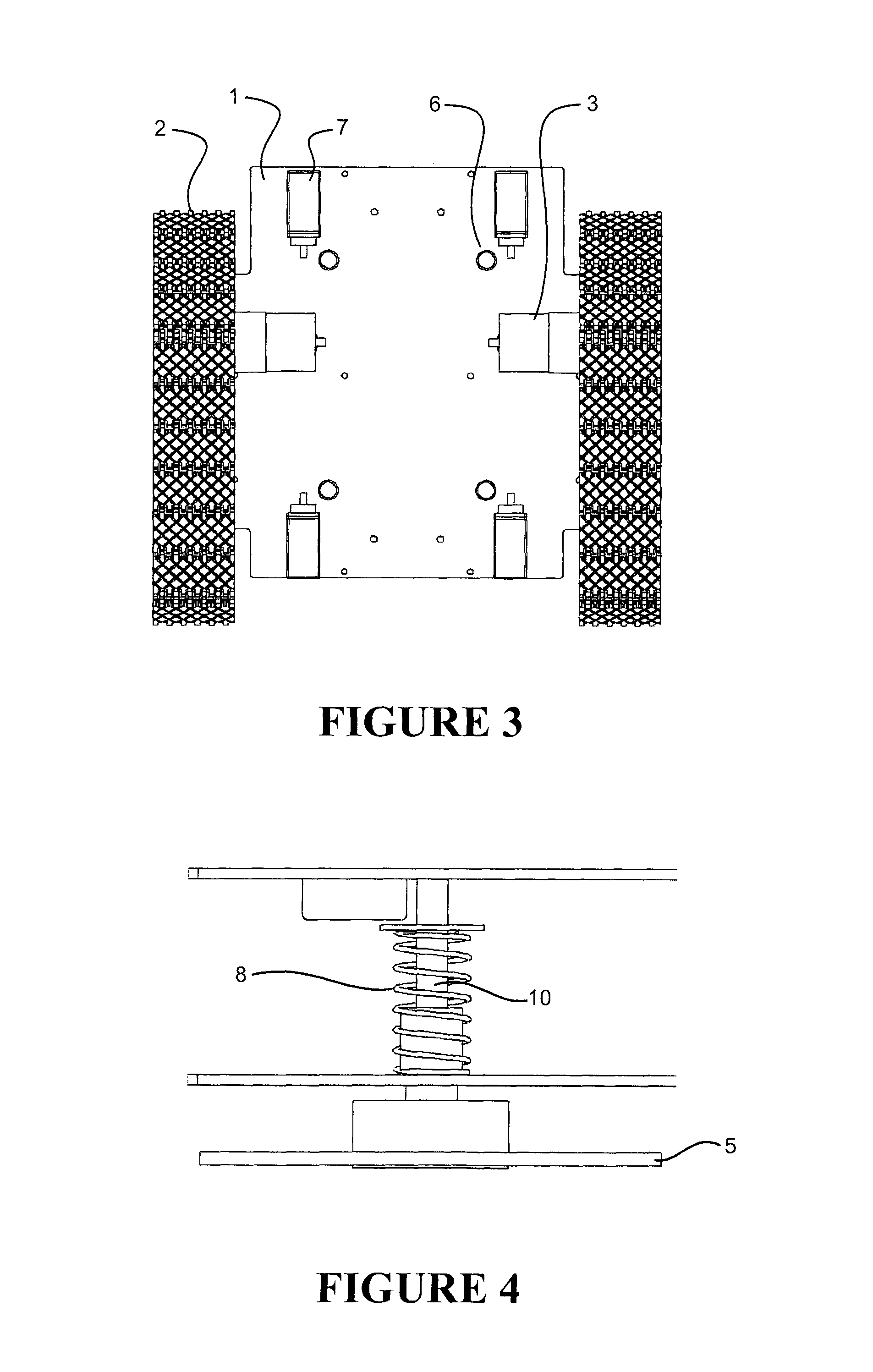Robotic climbing platform
a robotic platform and platform technology, applied in robots, endless track vehicles, transportation and packaging, etc., can solve the problems of reducing the payload capacity, reducing the operating duration of climbing robots, and adding weigh
- Summary
- Abstract
- Description
- Claims
- Application Information
AI Technical Summary
Benefits of technology
Problems solved by technology
Method used
Image
Examples
Embodiment Construction
[0131]Preferred embodiments of the present invention will be described with reference to the accompanying drawings. The embodiments do not represent the full scope of the invention, but rather the invention may be employed in other embodiments.
[0132]The present invention provides a passive vacuum based adhesion mechanism that is designed to slide on an inclined or inverted surface while maintaining vacuum. Such a device enables construction of climbing robots which include some or all of the following advantages, including that they adhere more reliably, are easier to control, can carry higher payloads, move faster, require less power, operate for increased duration and require less maintenance than existing climbing robot designs.
[0133]FIGS. 1 and 2 depict a robotic climbing platform. The platform has a chassis (1) which is supported by a pair of tracks (2). Each track is each driven by an electric motor (3). In an alternative embodiment the tracks (2) could be wheels. The tracks (...
PUM
 Login to View More
Login to View More Abstract
Description
Claims
Application Information
 Login to View More
Login to View More - R&D
- Intellectual Property
- Life Sciences
- Materials
- Tech Scout
- Unparalleled Data Quality
- Higher Quality Content
- 60% Fewer Hallucinations
Browse by: Latest US Patents, China's latest patents, Technical Efficacy Thesaurus, Application Domain, Technology Topic, Popular Technical Reports.
© 2025 PatSnap. All rights reserved.Legal|Privacy policy|Modern Slavery Act Transparency Statement|Sitemap|About US| Contact US: help@patsnap.com



